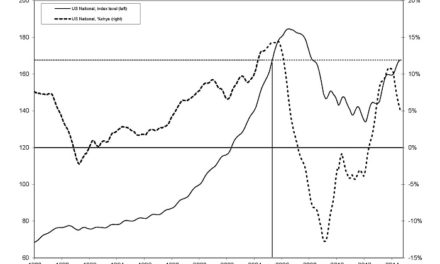The U.S. housing market has seen a lot of good news in the first half of 2015. However, there is one statistic that has yet to rebound: the U.S. homeownership rate reached its lowest point in more than two decades when it landed at 63.7% in the first quarter of 2015.
Homeownership rates were on the rise in the United States from the second half of 1994 until 2004, when the U.S. homeownership rate reached a high of 69.2%. However, a few years later amid the economic downturn, the homeownership rate began to drop as foreclosures reached historic levels.
According to The State of the Nation’s Housing 2015 report released last month by the Joint Center for Housing Studies of Harvard University, first-time homebuyers were the most affected by the financial crisis. The 35- to 44- and 45- to 54-year-old age groups were also hit hard. After the downturn, their rates of homeownership dropped significantly. Compared to their parents, who were in similar age ranges 20 years ago, their homeownership rates are 4% or 5% lower.
The good news is that the housing market is on fire this summer. Millennials (those in the 25- to 34-year-old age range) were recently surveyed, and 65% said they were planning to buy a home in the next 3 months. That’s a solid 12% higher than the start of the year. Millennials also make up 32% of buyers.
Gen X-ers, those born between 1965 and 1984, are still struggling to recover from the negative effects of the economic downturn. Many of them purchased homes just prior to the recession, and they lost the most value on their homes. The foreclosure rates hit them hard, and many of them are now renting.
Because of all this, rental vacancies are very low, and prices to rent are on their way up. Rent prices increased as the demand for rental homes increased, thanks to the sudden influx of ousted homeowners. Rental growth has exploded in the last decade, with 770,000 new rental households added every year between 2004 and 2014. Another reason rental prices have increased is more jobs in places with fewer available homes. Think of cities such as San Francisco, Denver, Seattle, and Boston.
However, the homeownership rate could be stabilizing as the economy continues to improve. More jobs mean those who were forced into apartments could soon be looking to move to a home. If interest rates stay low, first-time buyers as well as those looking to once again own a home could find themselves ready to dive into a market waiting for them.






Recent Comments